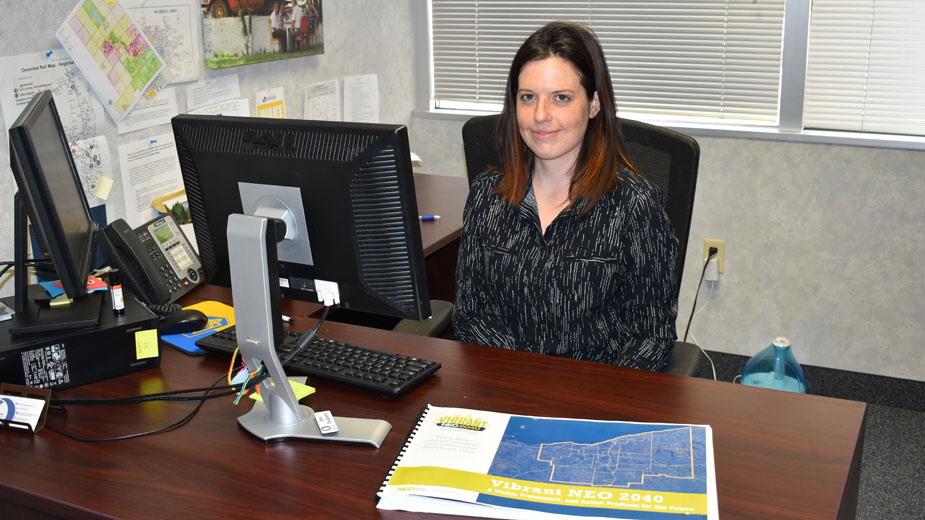Eastgate Gets Grant to Develop Planning Tools
YOUNGSTOWN, Ohio – Sara Daugherty was frustrated with planning tools that didn’t account for communities with declining populations like the Mahoning Valley. Now the economic development program manager for the Eastgate Regional Council of Governments is designing one.
Eastgate, the metropolitan planning organization for Mahoning, Trumbull and Ashtabula counties, recently received an $8,135 grant from the Consortium for Scenario Planning, an initiative of the Lincoln Institute of Land Policy.
It was one of four organizations awarded a share of $35,000 to apply scenario planning for development challenges ranging from population decline to climate change. According to a news release announcing the grant, Daugherty will research how to best adapt scenario-planning tools to address population decline, developing and testing software to support different strategies for addressing this challenge.
Scenario planning is “a way to look at different alternatives so you have a flexible vision for going forward,” Daugherty explained. For example, Eastgate’s last long-range transportation plan didn’t account for connected and autonomous vehicles “and going forward that’s something we really need to consider for our infrastructure system,” she said.
Eastgate was among eight organizations that submitted applications for the grants, according to Amy Cotter, associate director of urban programs at the Lincoln Institute.
“Scenario planning uses data and a more inclusive, participatory approach to help communities and regions make better decisions that are more likely to be implemented than those made through traditional processes,” she said.
The grant award followed Daugherty’s attendance at the consortium’s conference in Columbus last year. The Federal Highway Administration has urged organizations doing land use and transportation planning – organizations like Eastgate – to incorporate scenario planning into their work.
“Scenario planning is always based on growth. You always project growth,” Daugherty said. “I was getting frustrated with our state and national partners because there are no tools for areas like ours where we’re losing [0.5%] to 1% of population per year and getting no answer.”
The Vibrant NEO 2040 plan prepared by the Northeast Ohio Sustainable Communities Consortium, she continued, represented the first time that a scenario considering declining population was applied anywhere in the United States.
After discussions with Hunter Morrison, the northeastern Ohio consortium’s director, and representatives of Youngstown State and Cleveland State universities, “we thought this would be a good opportunity of how do you plan for decline because there really aren’t any tools available,” she said.
Eastgate and YSU will gather the data, while CSU will utilize that data to run scenarios to be used to develop the software tool.
The work being done by the partners promises to do more than help northeastern Ohio “chart a more vital future,” Cotter said. It also will lay the groundwork for similar regions across the country, “helping countless others to evaluate the best ways to tackle their own challenges,” while providing students skills and experience they can take to their future workplaces.
“It’s nice that they’re taking a chance on us to look for that applicable tool,” she said. “Then it’ll be something we can use in Cleveland, Akron, Dayton, Toledo, all of these areas that have limited growth.”
Pictured: Sara Daugherty, economic development program manager for the Eastgate Regional Council of Governments, will lead the development of new tools that factor in declining population for metropolitan planning.
Copyright 2024 The Business Journal, Youngstown, Ohio.



